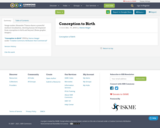
Image-maker Alexander Tsiaras shares a powerful medical visualization, showing human development from conception to birth and beyond. (Some graphic images.)
- Subject:
- Education
- Material Type:
- Diagram/Illustration
- Date Added:
- 02/01/2017

Image-maker Alexander Tsiaras shares a powerful medical visualization, showing human development from conception to birth and beyond. (Some graphic images.)
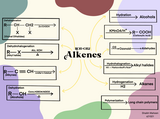
Concept map for alkenes
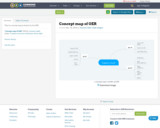
This is a concept map in Arabic for the OER

Concept of Alkene (Mop of preparation and reactionA few methods of preparation of alkenes have been detailed in this article

This is information to be used for a General Biology I (or Introduction to Biology) course for non-science majors.

This 90-minute activity features six interactive molecular models to explore the relationships among voltage, current, and resistance. Students start at the atomic level to explore how voltage and resistance affect the flow of electrons. Next, they use a model to investigate how temperature can affect conductivity and resistivity. Finally, they explore how electricity can be converted to other forms of energy. The activity was developed for introductory physics courses, but the first half could be appropriate for physical science and Physics First. The formula for Ohm's Law is introduced, but calculations are not required. This item is part of the Concord Consortium, a nonprofit research and development organization dedicated to transforming education through technology. The Concord Consortium develops deeply digital learning innovations for science, mathematics, and engineering.

Elementary grade students investigate heat transfer in this activity to design and build a solar oven, then test its effectiveness using a temperature sensor. It blends the hands-on activity with digital graphing tools that allow kids to easily plot and share their data. Included in the package are illustrated procedures and extension activities. Note Requirements: This lesson requires a "VernierGo" temperature sensing device, available for ~ $40. This item is part of the Concord Consortium, a nonprofit research and development organization dedicated to transforming education through technology. The Consortium develops digital learning innovations for science, mathematics, and engineering.

This resource is a video abstract of a research paper created by Research Square on behalf of its authors. It provides a synopsis that's easy to understand, and can be used to introduce the topics it covers to students, researchers, and the general public. The video's transcript is also provided in full, with a portion provided below for preview:
"For the first time, scientists have figured out how to grow and extend the life of primary airway epithelial cells from newborns and young children. These cells line our nasal passages and lungs, protecting us from pathogens, and controlling our immune responses to allergens. Differences in these cells may help explain why certain infants develop wheezing and asthma later in life, but studying them has been challenging because they are difficult to obtain in babies and usually die in culture after dividing a few times. Now, researchers at Children’s National Medical Center in Washington, D.C. and George Washington University have devised a way to reprogram pediatric airway epithelial cells so that they survive, creating a new model to study respiratory disorders that take hold early in life. The team collected airway epithelial cells from 23 donors, including newborns, infants and young children..."
The rest of the transcript, along with a link to the research itself, is available on the resource itself.
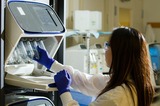
Students will explore the steps in conducting scientific investigation in Agriculture and discuss safety precautions that should be followed in conducting agricultural research. Lesson plan from the New Mexico Animal, Plant, and Soil Science Lesson Plan Library.

Conduction system of the Heart. Basic anatomy of the SA node, AV Node, Bunle of his, bundle branches and purkinje fibers.
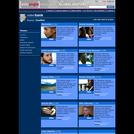
This is a collection of downloadable video clips on the theme of Conflict, with guiding questions for students. Clips are drawn from the following PBS WIDE ANGLE documentaries: "Greetings from Grozny" (2002), "Ladies First" (2004), "Suicide Bombers" (2004).

Explore how populations change over time in a NetLogo model of sheep and grass. Experiment with the initial number of sheep, the sheep birthrate, the amount of energy sheep gain from the grass, and the rate at which the grass re-grows. Remove sheep that have a particular trait (better teeth) from the population, then watch what happens to the sheep teeth trait in the population as a whole. Consider conflicting selection pressures to make predictions about other instances of natural selection.
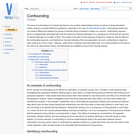
The issue of confounding is of central importance in any analytic epidemiological study (as well as in those descriptive studies aiming to compare different populations), especially in the case of observational studies. Confounding results from non-random differences between the groups of animals being compared in relation to a second, 'confounding' exposure which is independently associated with both the exposure of interest (although not a consequence of this) and the outcome of interest (although not an effect of this). This results in the effect of the exposure of interest is 'mixed up' with the effect of the confounding exposure, and therefore an incorrect estimate of the true association. As such, confounding is viewed by many authors as a form of bias - however, unlike forms of selection and information bias, it is a natural feature of the data (in the case of an observational study), and techniques are available to account for it during analysis.
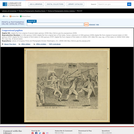
A crude portrayal of a fight on the floor of Congress between Vermont Representative Matthew Lyon and Roger Griswold of Connecticut. The row was originally prompted by an insulting reference to Lyon on Griswold's part. The interior of Congress Hall is shown, with the Speaker Jonathan Dayton and Clerk Jonathan W. Condy (both seated), Chaplain Ashbel Green (in profile on the left), and several others looking on, as Griswold, armed with a cane, kicks Lyon, who grasps the former's arm and raises a pair of fireplace tongs to strike him. Below are the verses: "He in a trice struck Lyon thrice / Upon his head, enrag'd sir, / Who seiz'd the tongs to ease his wrongs, / And Griswold thus engag'd, sir."|The Library has three states of the print. Dayton, Condy, and Green are identified by keyed references in the (plate) margins of the second and third states. In all three "Congress Hall, in Philada. Feb.15.1798" is inscribed in the lower right corner. In the second and third this is followed by "S.E.Cor.6th & Chesnut St." In the third only, the number 17 appears in the upper right. Weitenkampf lists four states, some of which (including two of the Library's impressions) appear to be later restrikes. The call numbers are: PC/US - 1798.A000, no. 1 (A size) (first state); PC/US - 1798.A000, no. 2 (A size) (second state); PC/US - 1798.A000, no. 3 (A size) (third state).|Title appears as it is written on the item.|Fowble, no. 329.|Murrell, p. 43, 45.|Weitenkampf, p. 12.|Forms part of: American cartoon print filing series (Library of Congress)|Published in: American political prints, 1766-1876 / Bernard F. Reilly. Boston : G.K. Hall, 1991, entry 1798-1.|Exhibited in: Creating the United States, Library of Congress, 2008.
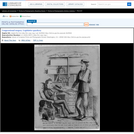
A rare anti-North satire, probably dealing with either the Crittenden Compromise or the Douglas Compromise. Proposed in December 1860 in the form of several constitutional amendments, the former called for restoration of the Missouri Compromise line and prohibition of slavery north of it. Stephen Douglas's compromise, an alternative proposed immediately thereafter, offered two similar amendments but also advocated settlement of the slavery issue by popular sovereignty. "Congressional Surgery" reflects the viewpoint of the lower South, which rejected both compromises. "Doctor North" (Pennsylvania congressman Thaddeus Stevens) sits with hands folded in a chair at left, a young black crouching beside him. On the doctor's desk rests a wooden leg labeled "Constitutional Amendment." The Doctor says, "Help you! Of Course! We will first, with your assistance, take you off your legs, & then fix you up nicely on these Constitutional Amendments." His patient "South," a tall bearded man with his left arm in a sling, replies, "Can't see it." Behind the desk are several crutches and bookshelves holding a bottle of "Black Draught" and a skull.|Signed: A. Del.|Title appears as t is written on the item.|Forms part of: American cartoon print filing series (Library of Congress)|Published in: American political prints, 1766-1876 / Bernard F. Reilly. Boston : G.K. Hall, 1991, entry 1860-44.

The video of coning and quartering created, explains the entire process of coning and quartering with voice-over
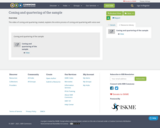
The video of coning and quartering created, explains the entire process of coning and quartering with voice-over

Highlights from the past and present of Connecticut, from the rich online collections of the Library of Congress.
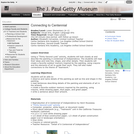
Using a "Thirty-Second Look" activity, students will look closely at and describe the painting A Centennial of Independence. The students will read their ideas and note line, shape, and other details. Then students will create a favorite outdoor memory inspired by the painting, using crayons and the elements of art to guide their work. They will also make connections to the theme of "teamwork."

This work, "Connection and Creation" by Andrea Bearman is licensed under CC-BY 4.0 International License.